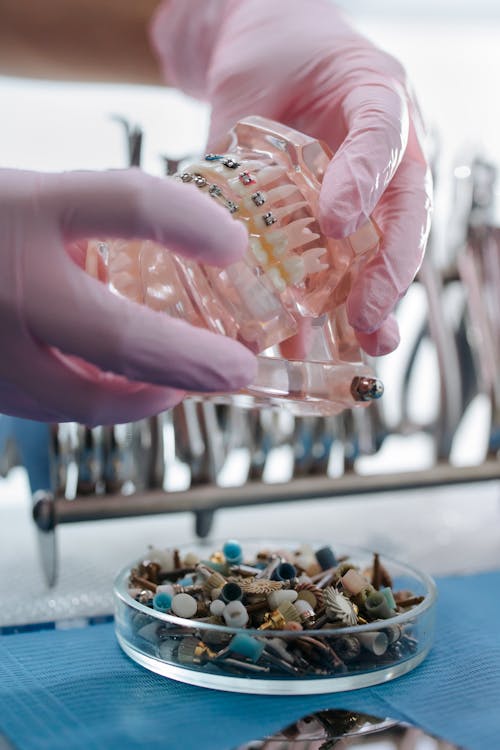Exploring the Benefits of Zygomatic Dental Implants: A Game Changer for Maxillofacial Surgery!
Zygomatic dental implants represent a transformative solution for patients with severe bone loss. Unlike standard dental implants, these innovative structures anchor to the cheekbone, providing stability and functionality. This article delves into the advantages, procedure, and potential risks associated with zygomatic dental implants, emphasizing their significance in modern dental restoration practices.
Introduction to Zygomatic Dental Implants
Zygomatic dental implants are specialized implants designed for patients who suffer from significant maxillary bone loss. Unlike traditional implants that rely on the alveolar ridge, zygomatic implants anchor into the zygomatic bone, providing a unique solution for those who are not candidates for standard dental implants. This innovative approach opens up new avenues for individuals needing comprehensive dental rehabilitation. The benefits of zygomatic dental implants extend beyond just aesthetics; they also improve functionality and patient confidence. Additionally, the surgical technique allows for a more straightforward implantation process, often minimizing recovery time compared to traditional methods. Understanding zygomatic dental implants is crucial for both healthcare professionals and patients seeking effective oral surgery options.
The Advantages of Zygomatic Dental Implants
One of the most significant advantages of zygomatic dental implants is their ability to provide dental solutions without the need for bone grafting. This is particularly advantageous for patients with a history of severe bone loss due to trauma, periodontal disease, or congenital issues. Zygomatic implants are placed in the dense zygomatic bone, ensuring immediate stability and the potential for immediate loading, which allows for restored function and aesthetics more rapidly compared to traditional implants. Moreover, the placement of zygomatic implants can often be completed within a single surgical visit, which is a considerable benefit for both patients and dental practitioners. With the integration of modern technology, the outcomes associated with zygomatic implants continue to improve, making them a preferred choice in many cases.
Understanding the Surgical Procedure
The surgical procedure for zygomatic dental implants is quite different from traditional implant placements. Initially, a comprehensive assessment is conducted, often utilizing 3D imaging technology to plan the exact position and angle of the implants. This imaging is critical to ensure optimal placement within the zygomatic bone, which helps in minimizing complications. During surgery, a flap is created in the gum to access the bone, followed by the careful placement of the implants. Surgeons often leverage guided surgery techniques to enhance accuracy. Recovery from zygomatic implant surgery tends to differ from other dental procedures, with many patients experiencing discomfort rather than significant pain. It's essential to follow post-operative care instructions provided by the oral surgeon to ensure the best healing outcomes.
Potential Risks and Considerations
While zygomatic dental implants are considered safe and effective, they are not devoid of risks. Potential complications may include infection, insufficient osseointegration, and sinus-related issues. Moreover, specific patient factors such as medical history, smoking status, and overall dental hygiene can influence the success of the implants. It is paramount that patients engage in comprehensive discussions with their dental professionals regarding the anticipated outcomes and risks related to zygomatic implants. Being informed and prepared enhances patient outcomes and satisfaction after zygomatic implantation surgeries. Like any medical intervention, establishing realistic expectations can lead to better overall experiences.
Patient Testimonials and Success Stories
Patients who have undergone zygomatic dental implant procedures often share transformative testimonials. Many report not only the restoration of their smiles but also a significant improvement in their quality of life. With enhanced chewing ability and greater self-confidence, individuals frequently express gratitude for the opportunity to engage in social activities without the fear of embarrassment associated with missing teeth. These personal stories highlight the broad impact of zygomatic dental implants on mental health, emotional wellbeing, and social interactions. Given the advancements in techniques and materials used in zygomatic implants, the future for patients requiring this kind of dental restoration appears promising.
Conclusion: The Future of Zygomatic Dental Implants
As dental technology continues to evolve, zygomatic dental implants are likely to play a crucial role in the field of restorative dentistry. The increasing success rates and positive patient feedback suggest that these implants will become more commonplace in treating patients with complex dental needs. Ongoing research and technological advances in implant design and surgical techniques are expected to further enhance the effectiveness of zygomatic implants. Ultimately, embracing such innovative approaches in dental restoration not only improves oral health but also contributes significantly to patient satisfaction and quality of life.
